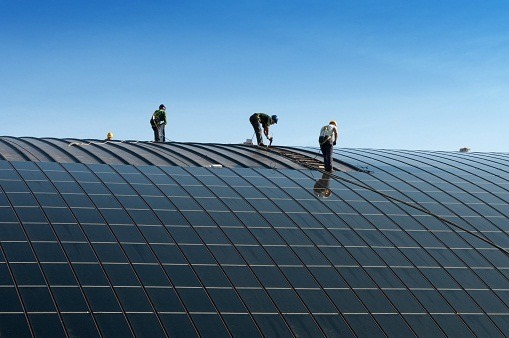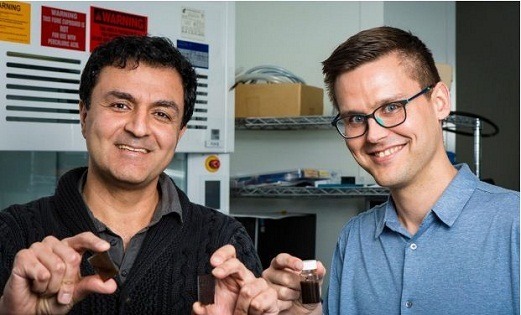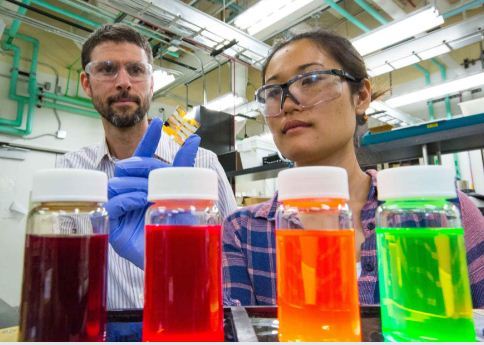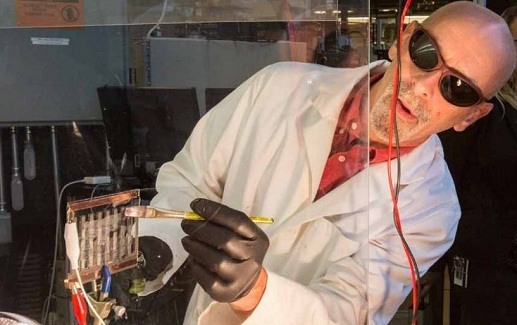In 2016, the US solar industry spent more than $150 billion in economic activity. When that sort of critical money begins flooding a drive, you understand the new innovation is not far behind.
And what seems more innovative than solar paint'? A paint that could generate power but still functions as normal paint? The ability to turn not just a roof but an entire building into a solar-generating surface? If this does not scream invention, then we do not know what does.
So far, the Lifeblood of the solar market has been conventional photovoltaic panels. Solar panels are a well-established technology that saves homeowners a whole lot of money.
However, the hassle and cost of rooftop solar panel installations usually prevent people from turning to solar power.
Imagine a world where we can simply paint our walls and roofs using a sort of paint that could generate electricity. Though we are pretty far off from actually implementing this technology, it is still exciting to consider.
So, what is solar paint? The main thing to know is it isn't a single product; now three unique technologies are known as solar paint'.
The 3 types of solar paint
The concept of using a paint-like substance to create electricity was discussed within the scientific community for several years. Only recently have the prospect of real-world applications emerged.
Three individual innovations are categorized as solar paints. Here we explore what they are and how they work for the future of solar power.
#1 Solar Paint Hydrogen
A team of experts from the Royal Melbourne Institute of Technology (RMIT) has developed solar paint, generating energy from water vapor.
In simple words, the paint works by capturing moisture from the atmosphere and using solar power to break the water molecules into oxygen and hydrogen. The hydrogen can then be used to generate clean energy.
This is the way the paint really works: It comprises a newly developed material, synthetic molybdenum-sulfide. Absorbing moisture from the air, it functions similarly to silica gel, which you have undoubtedly seen packed with consumer goods to be able to keep them dry.
This solar paint also comprises titanium oxide, a substance already present in traditional paint.
The titanium oxide improves the paint to use solar power to divide the absorbed moisture into oxygen and hydrogen particles. The hydrogen can then be used to generate clean energy.
RMIT lead Researcher Dr. Torben Daeneke said, "Our new development has a significant variety of advantages.
There's no demand for clean or filtered water to nourish the system. Any location that has water vapor in the air, even distant regions far from water, can produce fuel."
What makes this tech particularly special is that it outputs hydrogen, a clean source of energy and fuel storage. Suppose they get to the point at which they're ready for industrial use.
In that case, this hydrogen-collecting solar panel could just be an environmentally friendly and cost-effective approach to collect hydrogen for generating energy.
#2 Quantum dot solar cells aka photovoltaic paint
Quantum Dots, also called photovoltaic paint, were developed at the University of Toronto. They're nanoscale semiconductors that can absorb light and turn it into an electric current.
'Colloidal Quantum aka photovoltaics' – to use the full technical term - isn't just cheaper to manufacture but can also be considerably more efficient than conventional solar cells.
As per Research paper writer Susanna Thon, "There are two benefits to colloidal quantum dots. First, they are much cheaper, so they decrease the expense of electricity production measured in cost per watt of electricity.
But the most important benefit is that by simply changing the size of the quantum dot, it is possible to alter its light-absorption spectrum."
These dots could wind up being up to 11 percent more efficient than conventional solar panels.
In theory, at some stage in the future, we would be able to paint these quantum dots on our roofs and other surfaces to convert sunlight into electricity.
#3: Perovskite solar paint
Also known as spray-on solar cells, what makes this sort of solar paint potential is Perovskites.
Named after Russian mineralogist Lev Perovski, Perovskite substances are derived from a calcium nitric oxide mineral.
Perovskite structure was first found in 1839, but it was just 10 years ago a research team in Japan launched the first-ever application of Perovskite to produce solar cells.
What makes the Perovskite solar cells especially interesting because they can take the liquid form, making them the perfect candidate for solar paint.
Actually, Scientists have uncovered a way to spray liquid perovskite cells on surfaces, called spray-on solar cells.
The first-ever spray-on solar cell was produced at the University of Sheffield in 2014. A Perovskite-based blend was sprayed on a surface to form a sun-harnessing layer.
The future of solar paint
Solar paint may be utilized in the following three ways later on:
A final word on solar paint
Solar paint technologies discussed here have the ability to completely revolutionize the renewable energy market.
Solar paint of any form could make solar energy systems omnipresent around the world. Every roof can be solar painted.
But, alas, this fact is in the near – we're still years away from commercial applications of solar paint technologies.
Until then, if you're keen on saving some serious money on electricity bills and creating your clean energy, rooftop solar panels are undeniably the best way to go.
The 26% government tax credit provided until the end of 2022 makes obtaining solar panels for your home a no-brainer.





